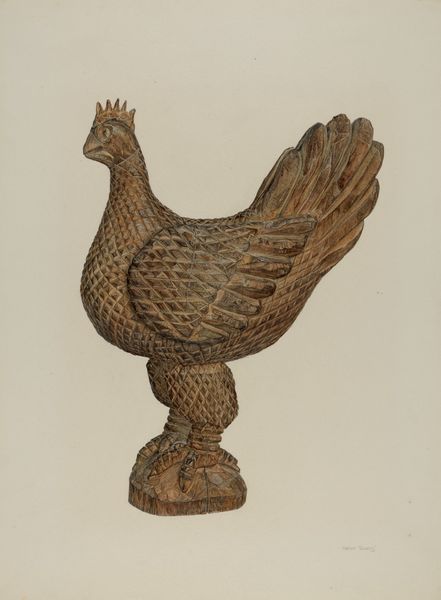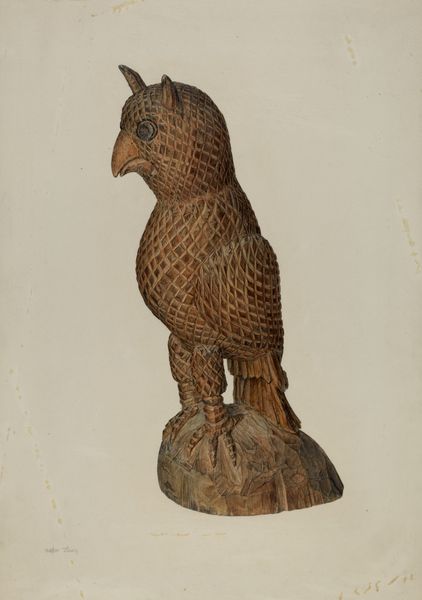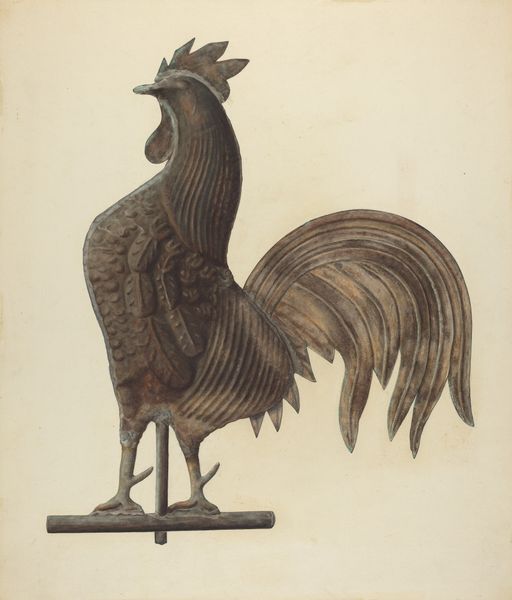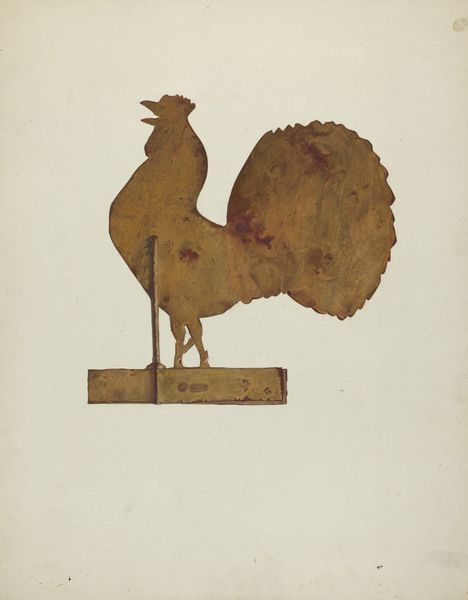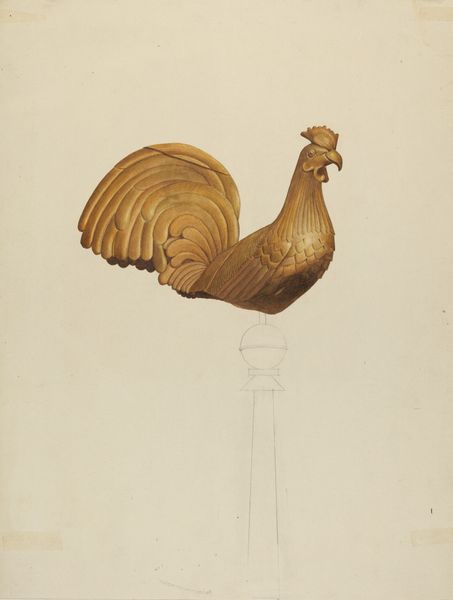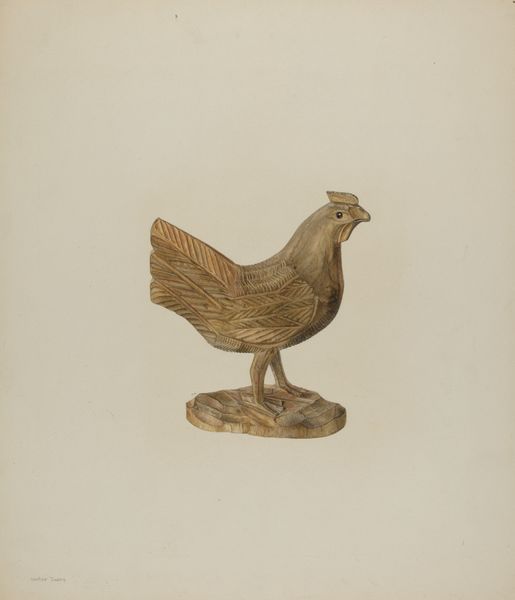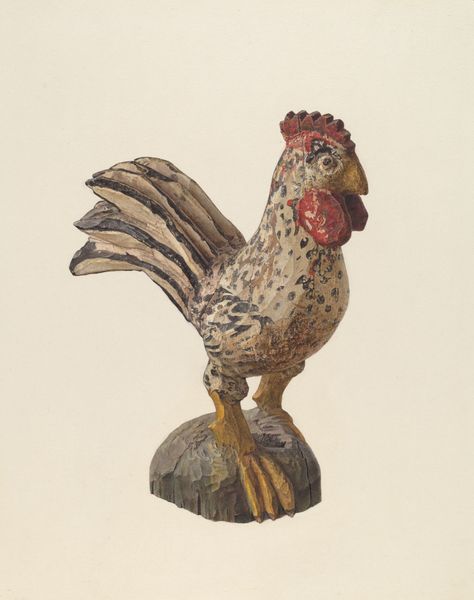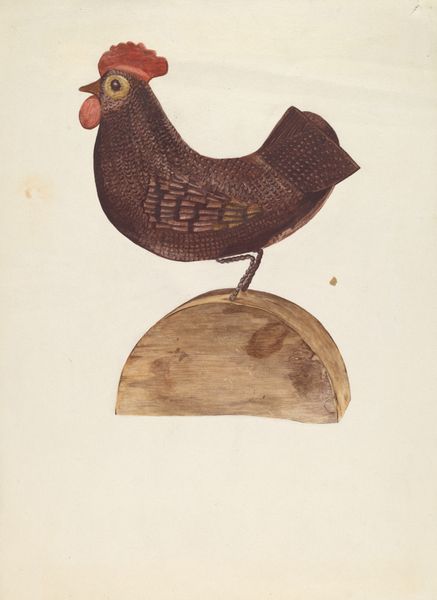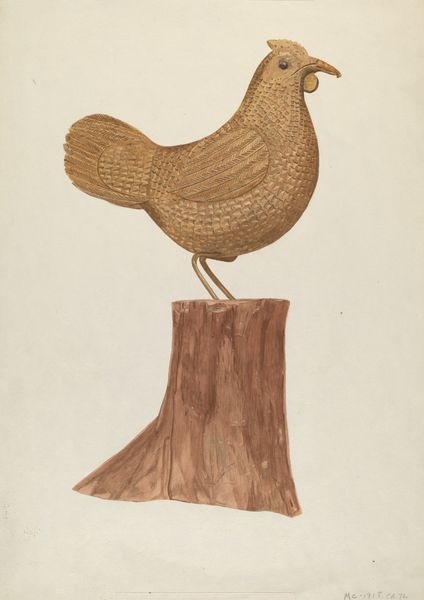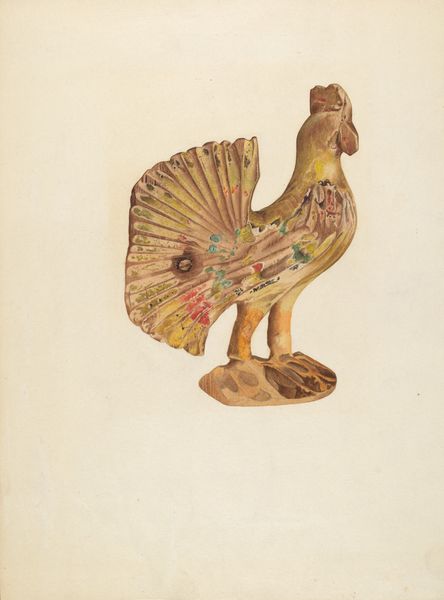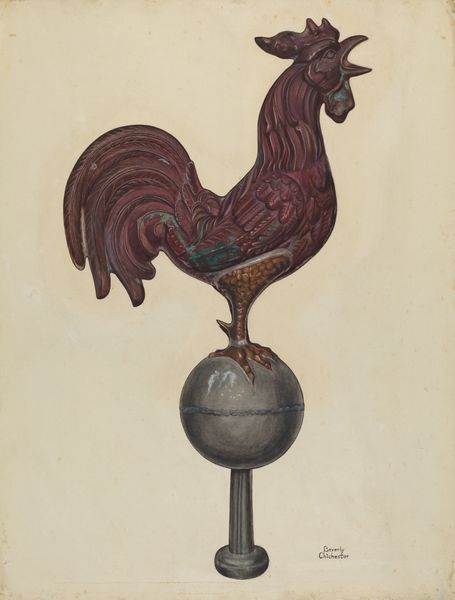
drawing, carving, sculpture, wood
#
drawing
#
carving
#
figuration
#
coloured pencil
#
folk-art
#
sculpture
#
wood
#
realism
Dimensions: overall: 49.6 x 37 cm (19 1/2 x 14 9/16 in.) Original IAD Object: 5 3/8" in diameter; 12" long; 15 3/8" high
Copyright: National Gallery of Art: CC0 1.0
Curator: What strikes me immediately about this drawing, is its almost uncanny stillness. The muted tones and the precision of the lines give the object a serene, contemplative quality. Editor: Indeed. And it is an image of "Pa. German Eaglet", circa 1941. It's interesting to consider this object within the context of Pennsylvania German folk art. This community had such a fascinating, and often insular, culture; and here we see the meticulous detail and skill associated with their craftsmanship documented on paper. Curator: Right. Given the date, I'm thinking about what “eaglet” signifies here—perhaps ideas around a younger generation emerging, carrying forward tradition but maybe also subtly hinting at a departure. Does the pose somehow reflect a striving for something new, but anchored to its place and community? It's not soaring; it’s standing still. Editor: That's a lovely observation. The depiction captures something specific, as well. I wonder what role images such as this played in representing identity? The choice of the artist to capture such an object—it's less overtly political, more subtly tied to notions of cultural pride. It's not explicitly referencing a grand narrative, but suggests belonging through representing these small objects in such exacting detail. Curator: Looking closely at this medium as a drawing—we can ask who was able to access these images. How was folk art seen then? Who owned this kind of art? The coloured pencil marks offer such textural depth as if the artist wanted to show the touch of human hands at play in creation. This also draws on a wider discussion about labour as form of resistance; highlighting domestic traditions through its meticulous depiction. Editor: Agreed. The context shifts our understanding from something purely aesthetic to something socially and culturally engaged. What this image of "Eaglet" reminds me, however, is that how folk art imagery gets presented, viewed, and displayed significantly shapes meaning, and even its perceived "authenticity." It all contributes in such important ways! Curator: So, with those layers revealed, hopefully viewers feel invited to dig deeper beyond just seeing it as another quaint depiction but find something more resonant. Editor: Exactly. Thinking about whose history is being told, by whom, and for whom--it matters even here!
Comments
No comments
Be the first to comment and join the conversation on the ultimate creative platform.
